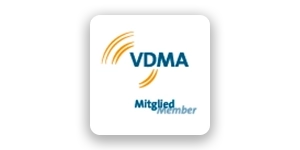Product Information Management
Convincing Stakeholders of PIM Software – It’s This Easy.

Content
Who is to be convinced and why?
Too time consuming, expensive, and superfluous – project managers often face resistance when attempting to argue for the implementation of software. Learn in this article which stakeholders you’re required to convince and what arguments seal the deal.
You want to put an end to the data chaos, which would, in turn, allow you to operate more effectively and finally focus on the important matters at hand? Then your decision to implement a PIM system is a progressive step towards the right direction. However, what are your CEOs’ and your superiors’ views on this idea? It’s often times the case that they don’t see the demand for new software since ‘you never change a running system, no matter what.’ The relevance is commonly underestimated. But you know for certain: Big time saves are just one of many features inherent to PIM software.
That is to say, your challenge is to bring your management and stakeholders on board by granting your implementation proposal more weight and significance. The following tips make your basis for argumentation more robust and, as a result, win over your higher-ups.
1. Address Your Stakeholder’s Requirements and Demands Straight from the Get-Go
Even before deciding for a system provider, it’s all about the requirements and demands of your stakeholders. Conduct a differential analysis and identify all aspects in the form of a list:
- What do your CEOs expect from a PIM system?
- What functions are mandatory for Content or Product Managers?
- What is important to your IT department during the implementation process?
- What do your coworkers think?
Having brought unity into the unordered manifoldness, you’ll have the criteria at hand with which you can conduct a well-informed search for a suitable software which satisfies your company’s specific demands. Additionally, you’ll have strong arguments present at hand with which you can defend your project from skeptical objections before they even come up in the first place.
2. Impress with Raw Numbers
There is nothing which is more convincing than putting things into numbers. For this reason, you should draw awareness to the costs involved in maintaining the current status quo. Make explicit how PIM software can make your processes more efficient – e.g., resources saved from the time-consuming search and management of data spread over separate sources and systems can be re-allocated to more important matters thanks to PIM. Big cost factors caused by inconsistent data are completely taken care of. Make sure to add that the implementation of a PIM system also allows you to cut non-monetary costs – e.g., a boost in working morale, less frustration among coworkers, and faster training for new employees thanks to standardized workflows.
3. Define Strategic Objectives – What is the Goal of the Journey?
Dare to peek into the crystal ball! What are your company’s strategic objectives? What are the mid-term and long-term goals to be accomplished and how can a software support your company therein? Render thematic future challenges and possibility spaces of your company and demonstrate that a PIM solution has strategic significance in achieving such goals. Does your company want to stay streets ahead of the competition in online retail and inspire customers with innovative product experience? To this end, high-quality product data is an absolute necessity. Or is your company’s focus to improve, simplify, and standardize workflows in and through the digitalization of product data processes? Here, too, a PIM solution is a must-have.
Reading Tip: Product Experience from Buyer Persona to Customer Journey
4. Visualize the Improvement of Concrete Processes
When you’ve settled for a specific PIM software, you may already have your eyes on its application and how it will improve individual workflows. You need a clear-cut concept of all these processes. Explain to your superiors and stakeholders what still remains unoptimized in current process steps and elaborate how the PIM software can fix this at the click of a few buttons.
5. Gather Allies
What’s the opinion of your coworkers? Do they also wish for a solution which simplifies work processes or is there still lingering fear concerning the use of new software? Before arguing with higher-ups, you should simply ask your team and relevant departments what they think. This is also a good opportunity of clearing out any fears or misunderstandings concerning the implementation of new software. In fact, there may even be colleagues who already have experience when it comes to PIM software – and who can support you in formulating arguments. The positive support of your colleagues will help in backing up your arguments and inspiring your superiors to implement the software.
Having completed the preliminaries, you can now focus on the actual task at hand: Now, it’s about convincing CEO and CTO. The following provides you with a compilation of questions and answers which can further facilitate the argumentation process.
And what happens next?
Having completed the preliminaries, you can now focus on the actual task at hand: Now, it’s about convincing CEO and CTO. This can only be realized if you can clear out all your specific objections and questions with sound arguments. In our blog entry, “Overcoming Objections – With these Arguments, You will Convince Your CEO and CTO of PIM,” we’ve compiled the essential questions and answers which will back up and solidify your arguments. Additionally, our free PowerPoint template will support you with balanced arguments who nobody will dismiss with a “No.”
From Our Blog
You may also be interested in the following articles







